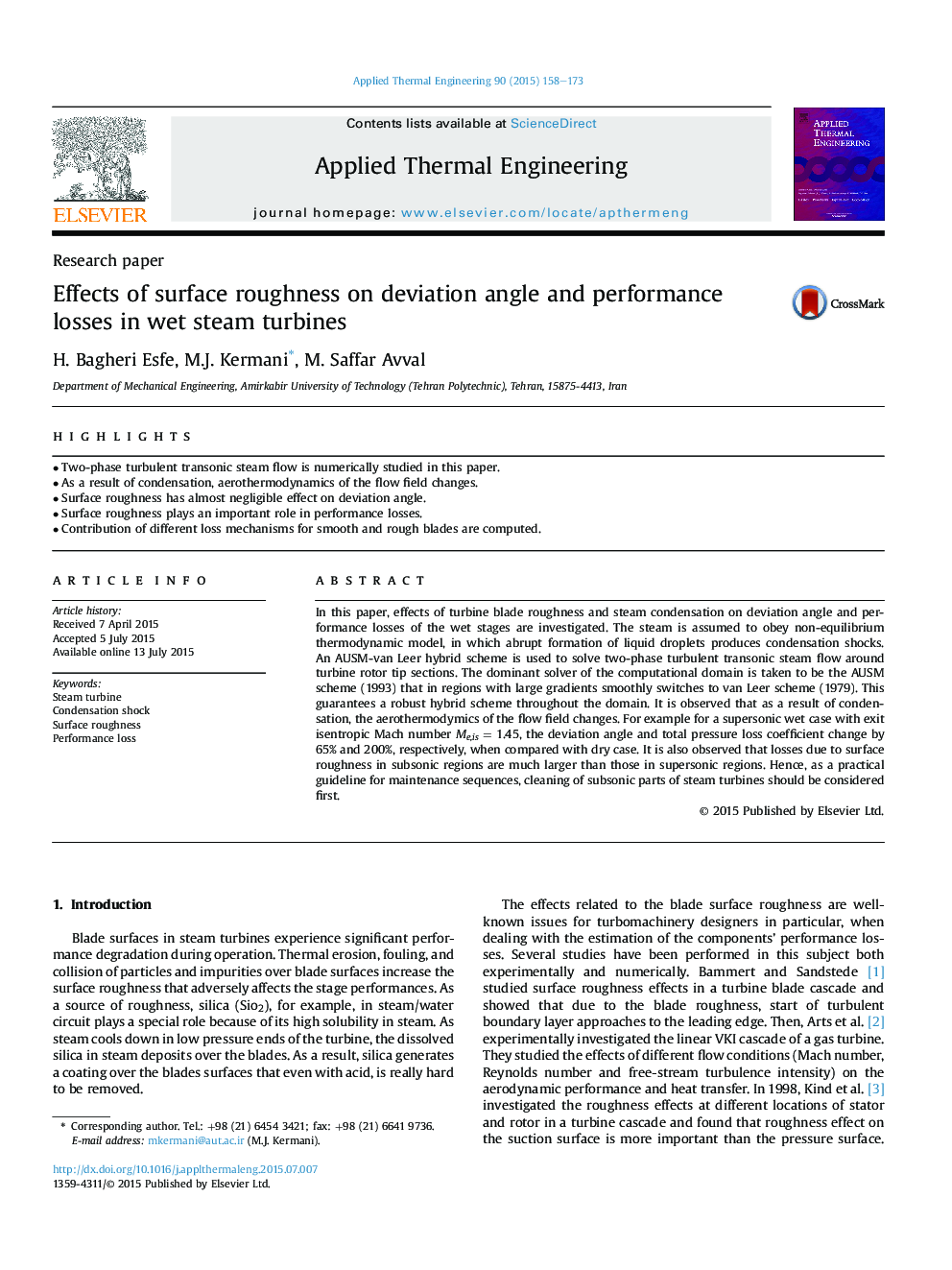| کد مقاله | کد نشریه | سال انتشار | مقاله انگلیسی | نسخه تمام متن |
|---|---|---|---|---|
| 7048822 | 1457138 | 2015 | 16 صفحه PDF | دانلود رایگان |
عنوان انگلیسی مقاله ISI
Effects of surface roughness on deviation angle and performance losses in wet steam turbines
ترجمه فارسی عنوان
اثر زبری سطح بر روی زاویه انحراف و افت عملکرد در توربین های بخار مرطوب
دانلود مقاله + سفارش ترجمه
دانلود مقاله ISI انگلیسی
رایگان برای ایرانیان
کلمات کلیدی
توربین بخار، شوک خنک کننده زبری سطح، از دست دادن عملکرد،
موضوعات مرتبط
مهندسی و علوم پایه
مهندسی شیمی
جریان سیال و فرایندهای انتقال
چکیده انگلیسی
In this paper, effects of turbine blade roughness and steam condensation on deviation angle and performance losses of the wet stages are investigated. The steam is assumed to obey non-equilibrium thermodynamic model, in which abrupt formation of liquid droplets produces condensation shocks. An AUSM-van Leer hybrid scheme is used to solve two-phase turbulent transonic steam flow around turbine rotor tip sections. The dominant solver of the computational domain is taken to be the AUSM scheme (1993) that in regions with large gradients smoothly switches to van Leer scheme (1979). This guarantees a robust hybrid scheme throughout the domain. It is observed that as a result of condensation, the aerothermodymics of the flow field changes. For example for a supersonic wet case with exit isentropic Mach number Me,is = 1.45, the deviation angle and total pressure loss coefficient change by 65% and 200%, respectively, when compared with dry case. It is also observed that losses due to surface roughness in subsonic regions are much larger than those in supersonic regions. Hence, as a practical guideline for maintenance sequences, cleaning of subsonic parts of steam turbines should be considered first.
ناشر
Database: Elsevier - ScienceDirect (ساینس دایرکت)
Journal: Applied Thermal Engineering - Volume 90, 5 November 2015, Pages 158-173
Journal: Applied Thermal Engineering - Volume 90, 5 November 2015, Pages 158-173
نویسندگان
H. Bagheri Esfe, M.J. Kermani, M. Saffar Avval,
